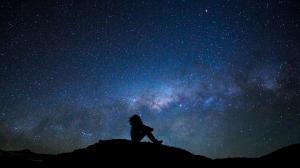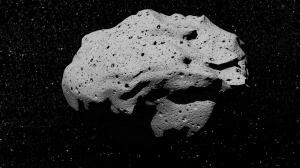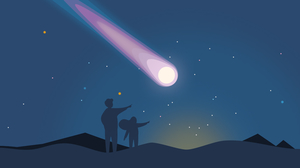In 2026, the Lyrids will peak on the night between Apr 22–23
April Meteor Shower
The Lyrid Meteor Shower is usually active between April 16 and 25 every year. It tends to peak around April 22 or 23.
Lyrids 2025: A good chance to see a meteor!
Oldest Recorded Meteor Shower
Named after constellation Lyra, the Lyrids are one of the oldest recorded meteor showers—according to some historical Chinese texts, the shower was seen over 2,500 years ago. The fireballs in the meteor shower are created by debris from comet Thatcher, which takes about 415 years to orbit around the Sun. The comet is expected to be visible from Earth again in 2276.
What Time Does the Meteor Shower Peak?
The table is updated daily and shows the position of the Lyrids radiant in the sky for the upcoming night. Use the date drop down above the Interactive Meteor Shower Sky Map to change dates.
| Lyrids meteor shower for Columbus (Night between April 22 and April 23) | ||
|---|---|---|
| Time | Azimuth/Direction | Altitude |
| Wed 10:00 pm | 50° | 6.1° |
| Wed 11:00 pm | 58° | 15.3° |
| Thu 12:00 midnight | 66° | 25.5° |
| Thu 1:00 am | 73° | 36.2° |
| Thu 2:00 am | 80° | 47.4° |
| Thu 3:00 am | 89° | 58.8° |
| Thu 4:00 am | 100° | 70.3° |
| Thu 5:00 am | 128° | 80.9° |
| Thu 6:00 am | 222° | 82.2° |
| Thu 7:00 am | 257° | 72.0° |
Direction to see the Lyrids in the sky:
- Azimuth is the direction, based on true north; a compass might show a slightly different value.
- Altitude is height in degrees over horizon.
How to See the Lyrids
You don't need any special equipment or a lot of skills to view a meteor shower. Even though all you really need is a clear sky, lots of patience, and our handy Interactive Meteor Shower Sky Map with a visibility conditions meter to see a meteor shower, the following tips can help maximize your shooting star viewing experience.
- Find a secluded viewing spot, away from the city lights. Once at the venue, your eyes may take 15 to 20 minutes to get used to the dark.
- Dress for the weather, and make sure you are comfortable, especially if you plan to stay out long. Bring a blanket or a comfortable chair with you—meteor watching can be a waiting game.
- Once you have found your viewing spot, lie down on the ground and look at the sky. You can use our Interactive Meteor Shower Sky Map or the table above to find the direction of the radiant; the higher the radiant is above the horizon, the more meteors you are likely to see.
- Meteor showers appear to originate from the radiant, but meteors can appear in any part of the sky.



